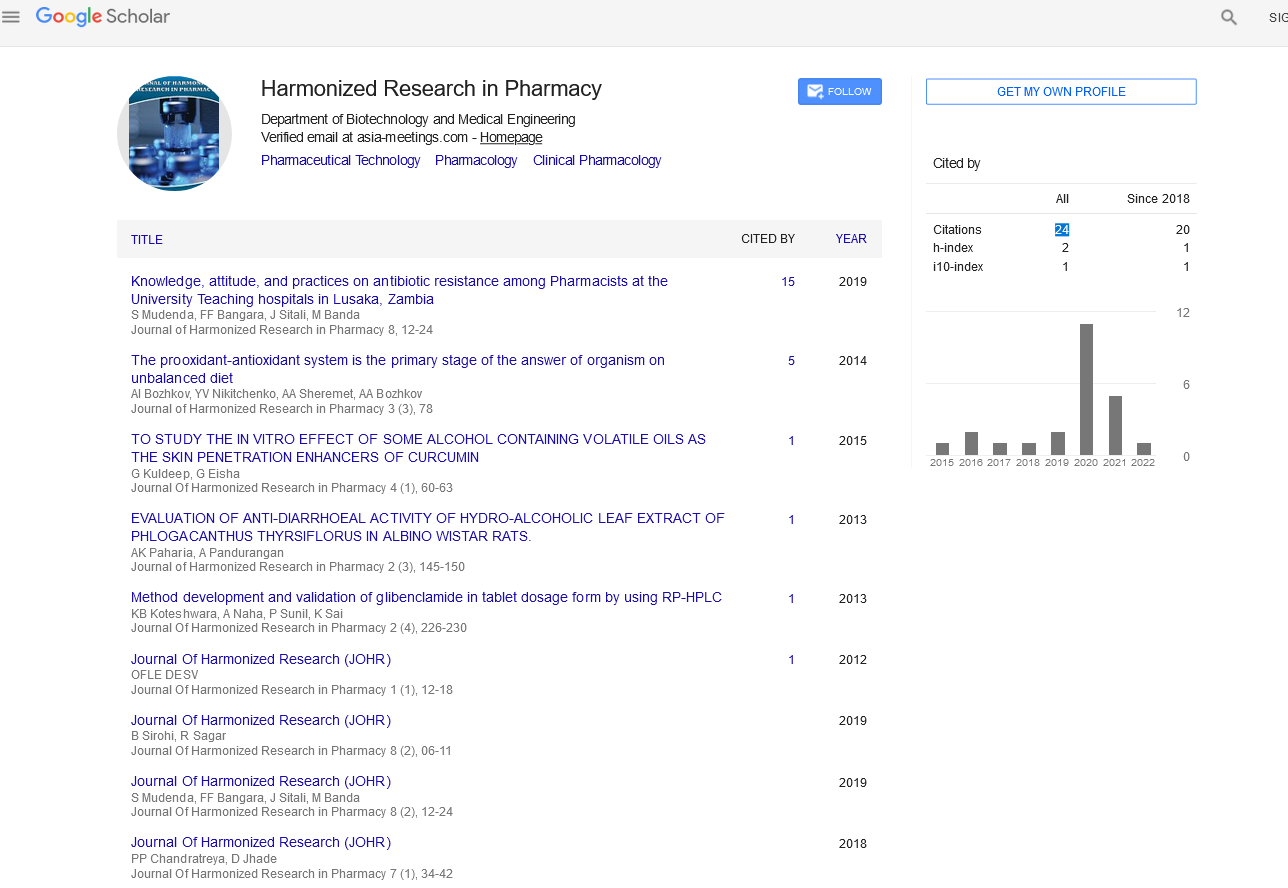Perspective - (2022) Volume 11, Issue 1
IMPORTANCE OF PHARMACOKINETICS IN PRE-CLINICAL TRAILS
Marly Melo*Received: Mar 01, 2022, Manuscript No. JHRP-22-62446; Editor assigned: Mar 04, 2022, Pre QC No. JHRP-22-62446 (PQ); Reviewed: Mar 18, 2022, QC No. JHRP-22-62446; Revised: Mar 25, 2022, Manuscript No. JHRP-22-62446 (R); Published: Apr 04, 2022, DOI: 10.30876/2321-0958.22.11.177
Description
Pharmacokinetics is an important area of research that provides important data on the behavior of molecules in living organisms. By applying pharmacokinetic principles to preclinical trials, scientists can design safer and more accurate clinical trials. Pharmacological activity depends on appropriate drug levels at the site of action, but access to these sites for pharmacokinetic sampling is often restricted. Therefore, it is often dependent on plasma concentration as a surrogate value to understand the relationship between exposure and response. Recent advances in analytical and quantitative methods allow for a more robust and often non- invasive assessment of drug pharmacokinetics at the site of action. For example, the half-life of some medicines may be longer in the elderly. Physiological changes that occur with age affect many aspects of pharmacokinetics, other factors are associated with individual physiology, such as renal failure and obesity. Drug delivery should be based on the needs of the individual patient. This can delay the optimal response and cause side effects, pharmacokinetic principles help physicians adjust dosages more accurately and quickly.
Knowing how a molecule behaves informs it of its suitability as a drug discovery target. Without this knowledge, developed drugs containing this substance can cause death and unwanted side effects. It can cause the effects of cancer and genotoxicity. This is obviously harmful and should be avoided. Some of the most important pharmacokinetic principles that need to be understood during preclinical studies are distribution, absorption, metabolism, and excretion. In vitro biochemical data on drug responses need to be reported and analyzed before proceeding with human clinical trials. Pharmacokinetic models help ensure that the drug does not fail during the study for reasons that, if properly implemented and analyzed, could have been predictable and avoidable. Not only is there consideration for human health, but it also has an economic impact on research.
The pharmacokinetics of a drug depends on patient-related factors and the chemistry of the drug. Several patientrelated factors can be used to predict the pharmacokinetic parameters of the population. For example, the half- life of some drugs, especially those that require both metabolism and excretion, can be significantly longer in the elderly. Due to the lack of access to relevant tissues or body fluids for measuring drug levels, plasma drug levels are collected in the hope that they will correlate with or provide information about exposure in the compartment of interest. However, the exclusive use of plasma exposure in the Pharmacokinetics-Pharmacodynamics (PK/PD) model is a particular situation, as penetration into these matrices can vary significantly between structurally similar compounds. Underneath, the selection of one inaccurate guide dose that may result in a non-optimal assessment of the exposure-response relationship. Differences in permeation between structurally similar compounds at a given site are due to a variety of factors, from permeability to local metabolism, physicochemical properties, and the role of drug transporters in efflux or uptake. Our ability to assess the role that transporters may play in the distribution and excretion of specific drugs is the development of increasingly complex in vitro systems and how such in vitro results have clinical significance. In most preclinical studies, self-administration is the primary model for these patterns. However, there are major problems with this approach. Self-administration consistently involves high concentrations of the drug, but in real situations drug use tends to be intermittent. Pharmacokinetics is an important area of research that provides important data on the behavior of molecules in living organisms. By applying pharmacokinetic principles to preclinical trials, scientists can design safer and more accurate clinical trials.

Google Scholar citation report
Citations : 147
Journal of Harmonized Research in Pharmacy received 147 citations as per google scholar report









